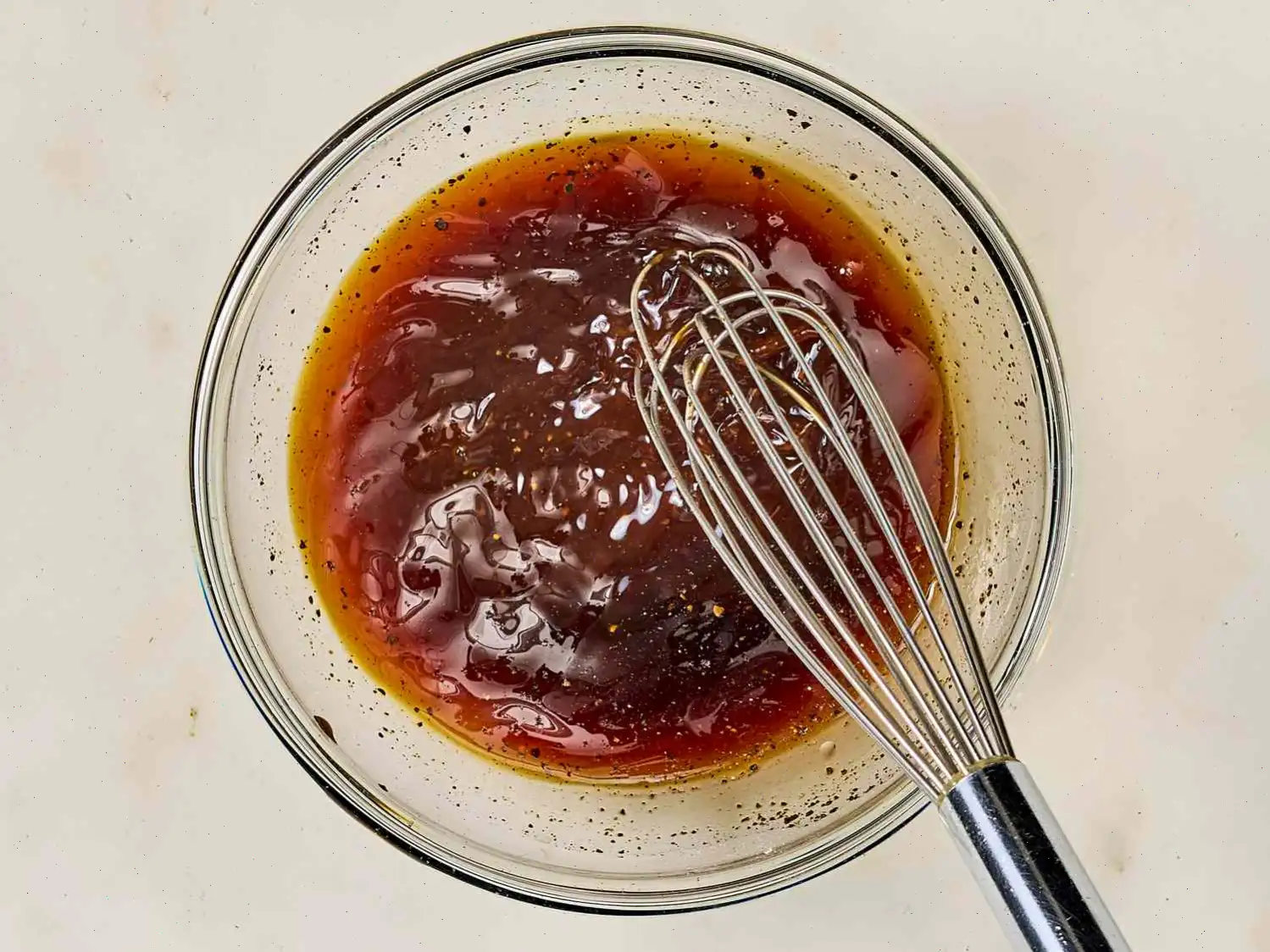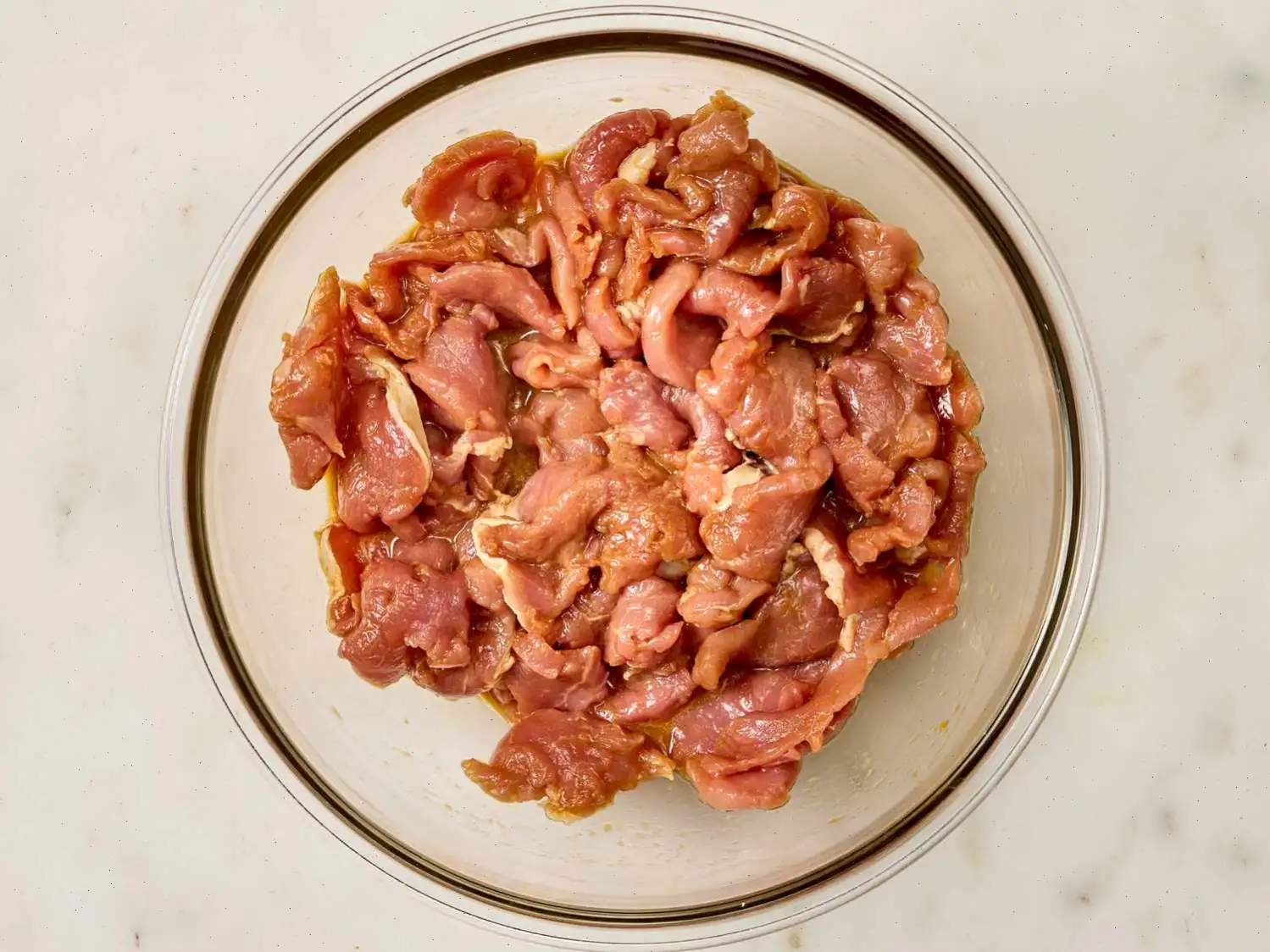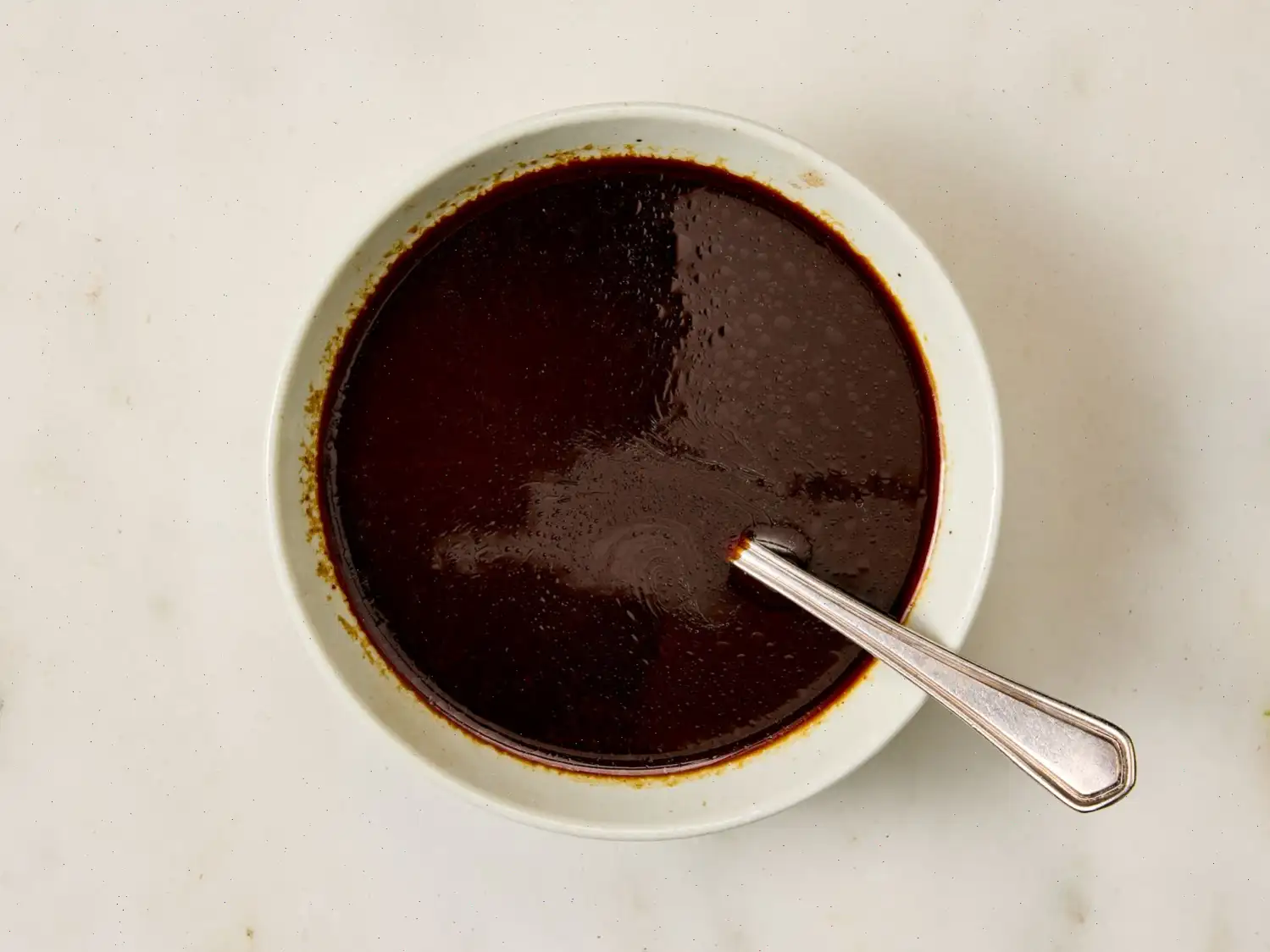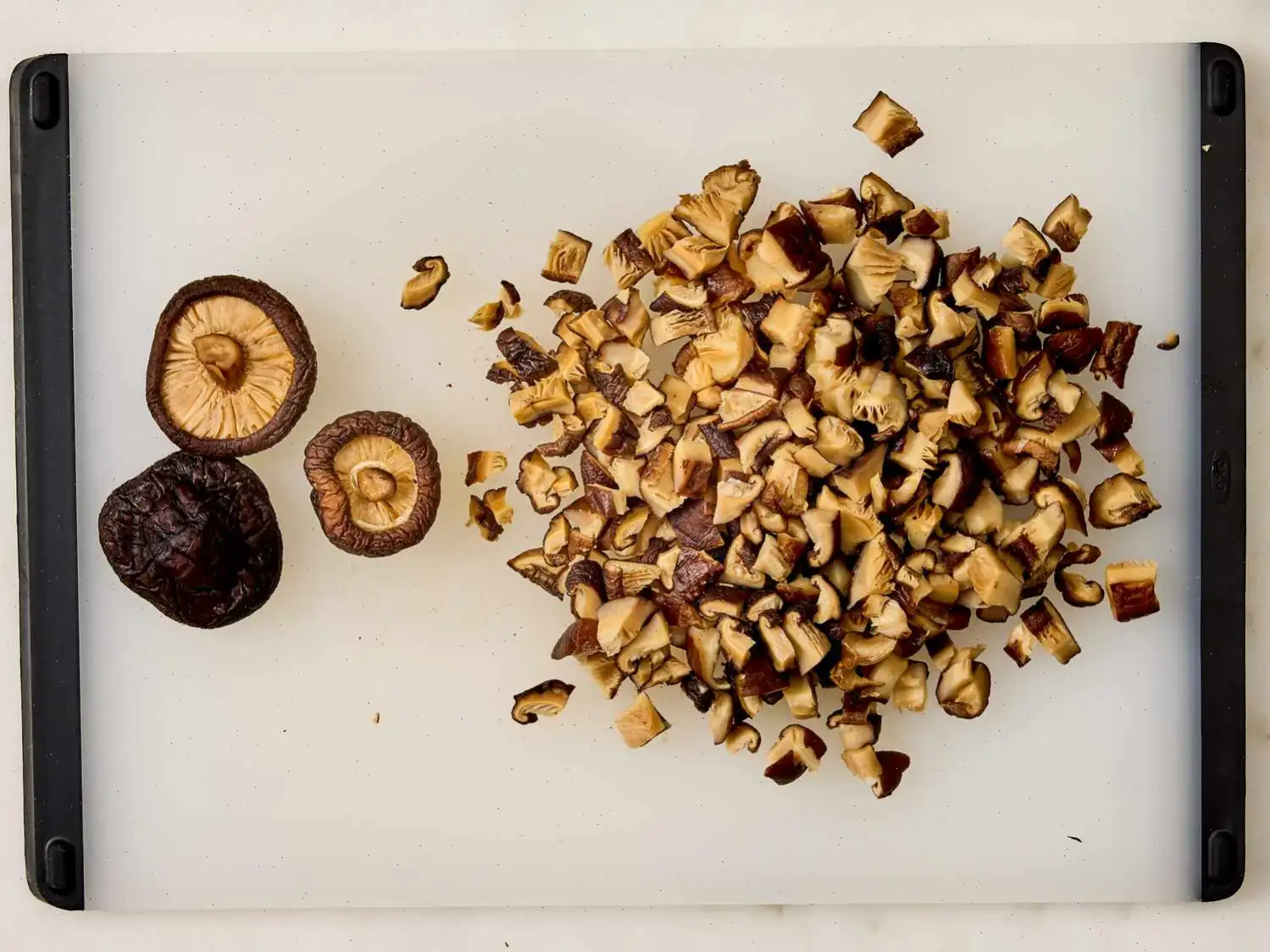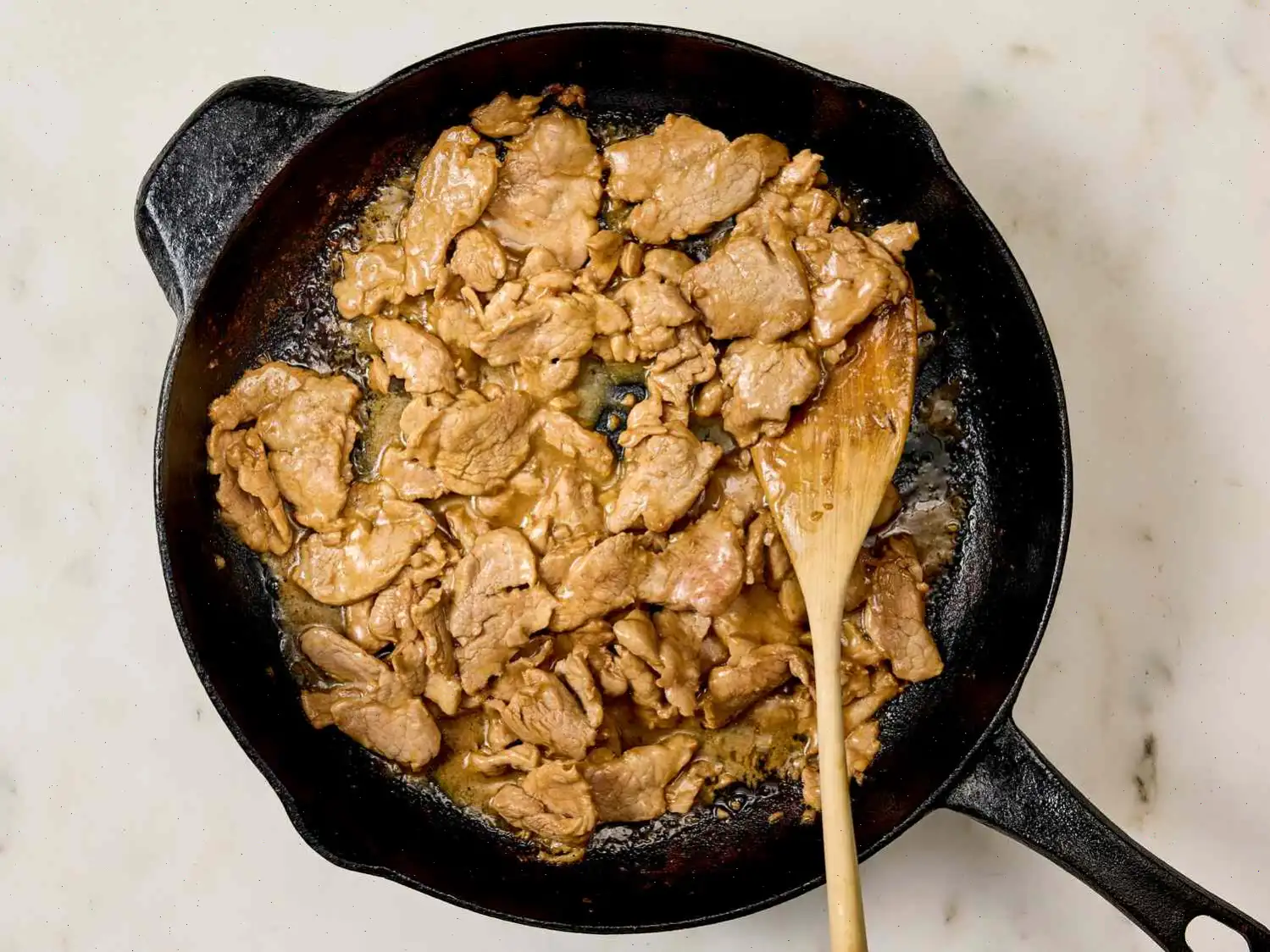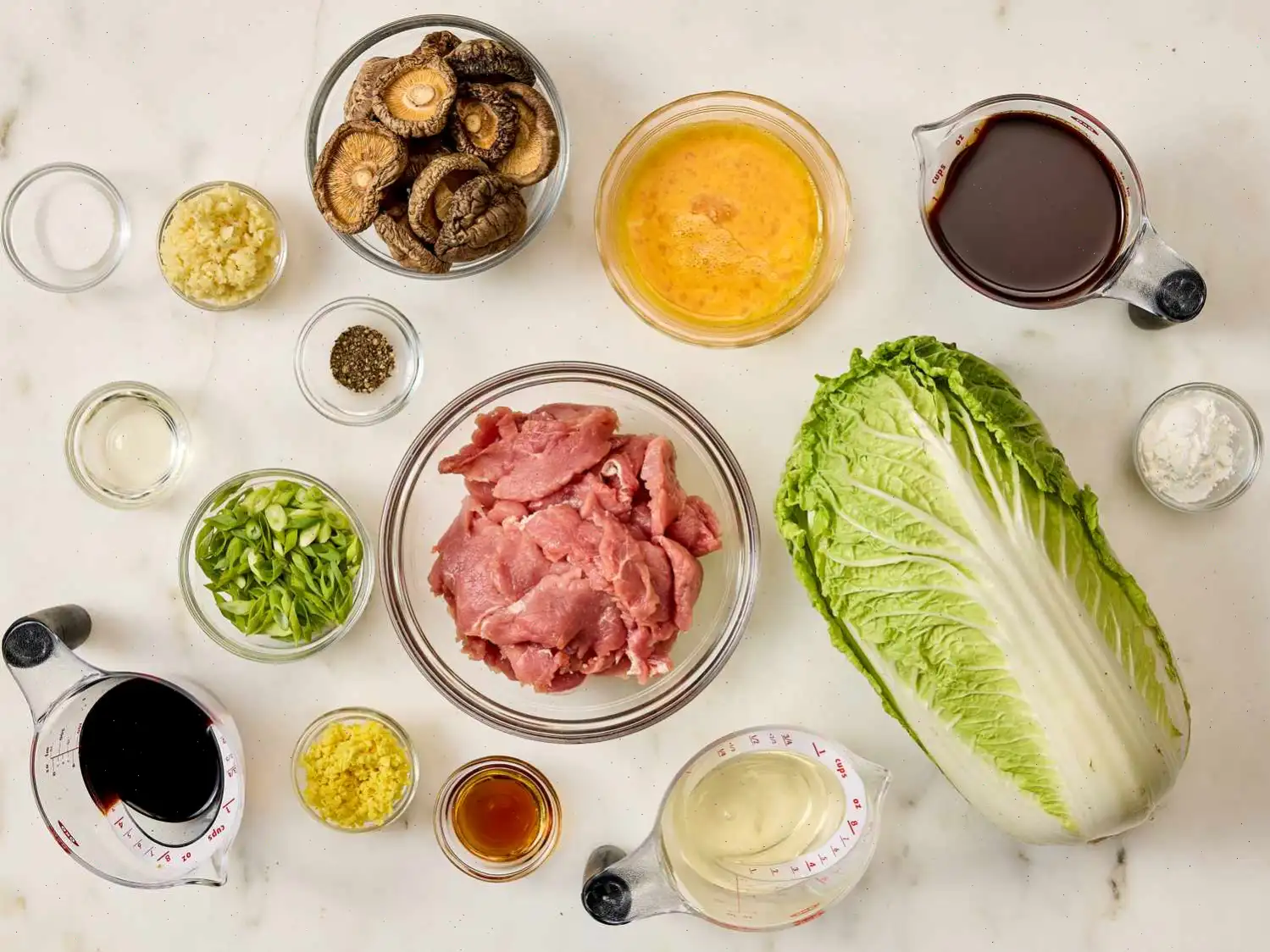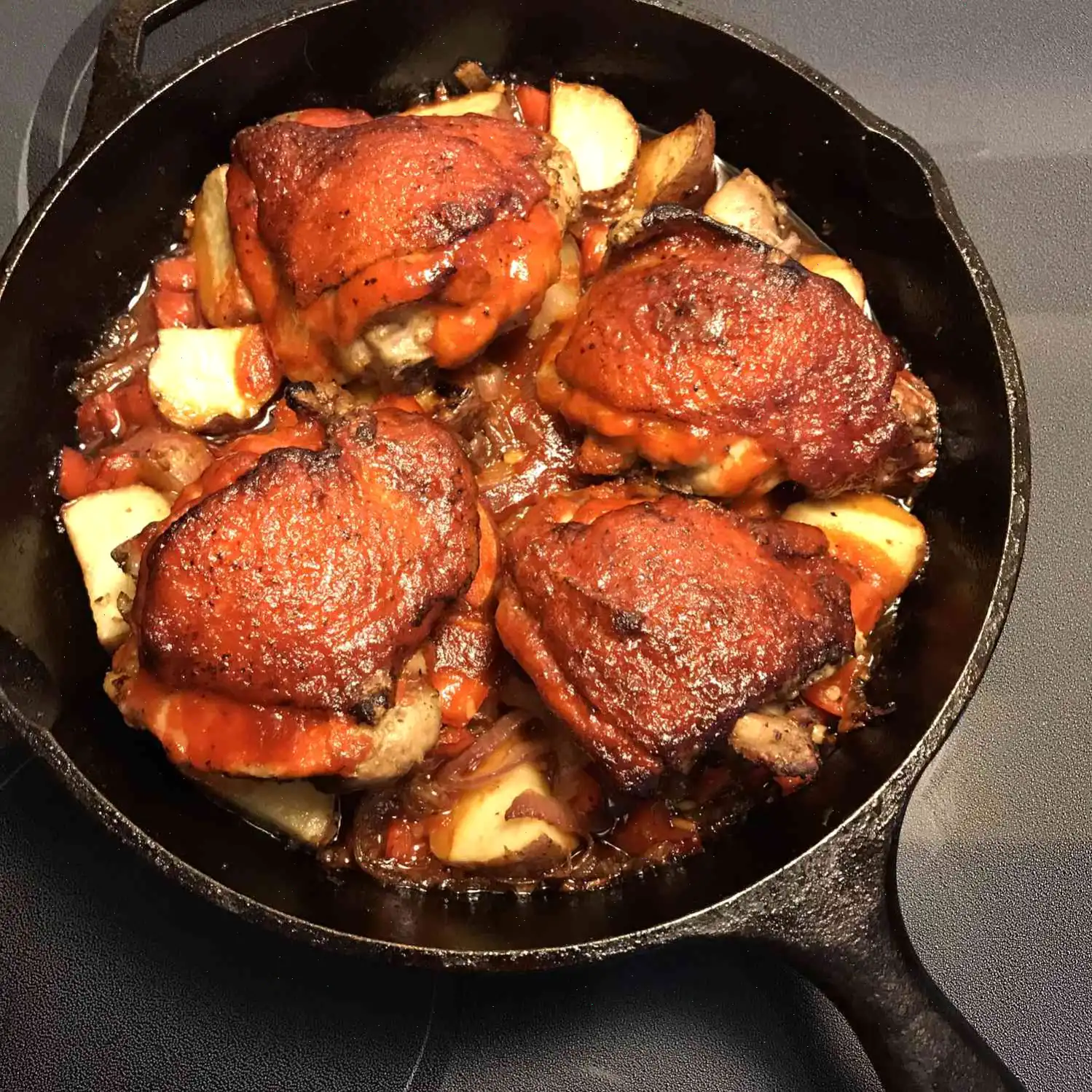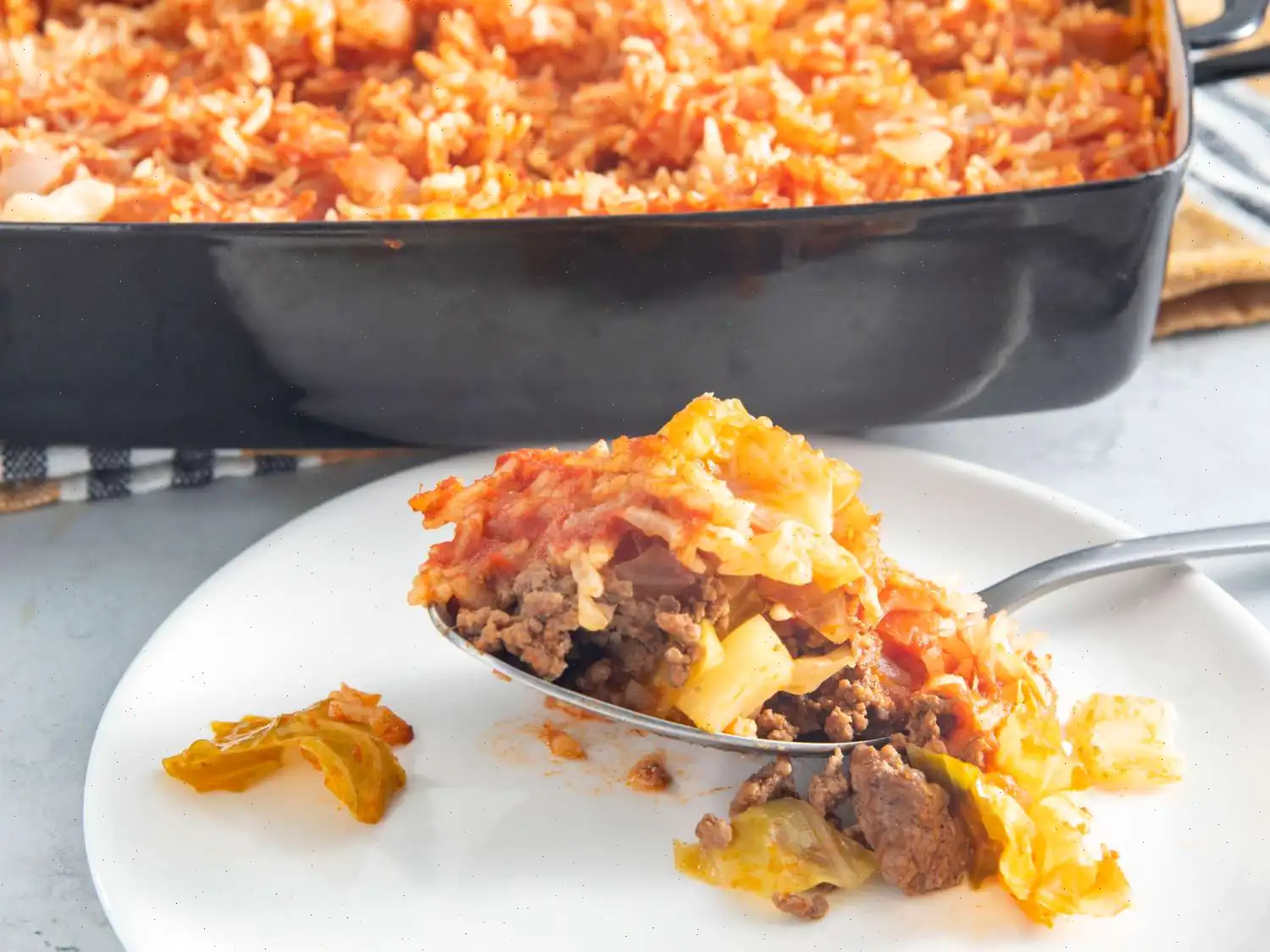
Moo Shu Pork Recipe
Ingredients
- 2 tablespoons soy sauce
- 2 tablespoons white wine
- 1 teaspoon sesame oil
- 2 teaspoons cornstarch
- 1 pound pork tenderloin, cut into thin strips
- 1 ounces dried shiitake mushrooms
- cup sliced green onions
- 3 tablespoons minced garlic
- 2 tablespoons peeled and minced fresh ginger
- 1 head napa cabbage
- 3 tablespoons soy sauce
- 3 tablespoons white wine
- teaspoon cornstarch
- teaspoon white sugar
- teaspoon ground black pepper
- 1 tablespoon vegetable oil, plus more if needed
- 2 large eggs, beaten
- 1 cup hoisin sauce
- 1 tablespoon soy sauce
- 16 frozen Chinese pancakes, thawed and warmed
Directions
- In a non-reactive bowl, combine 2 tablespoons soy sauce, 2 tablespoons white wine, 1 teaspoon sesame oil, and 2 teaspoons cornstarch. Stir until smooth. Add the pork strips to the marinade and mix well. Refrigerate for 30 minutes to 1 hour.
- Meanwhile, place dried shiitake mushrooms in a bowl and pour hot water over them. Let them soak for 15-20 minutes. Once softened, drain, pat dry, and remove any tough stems. Finely chop the mushrooms and combine them with the sliced green onions, minced garlic, and ginger in a separate bowl. Set aside.
- Remove the outer leaves from the napa cabbage. Tear off the green leafy portions and slice the stalks into thin 1-inch pieces. Finely chop the leafy sections and set them aside separately from the stalks.
- In a small bowl, mix together 3 tablespoons soy sauce, 3 tablespoons white wine, teaspoon cornstarch, teaspoon white sugar, and teaspoon black pepper. Set this mixture aside.
- Heat 1 tablespoon vegetable oil and 1 teaspoon sesame oil in a wok over medium-high heat. Add the marinated pork and stir-fry until fully cooked and browned on the edges, about 5 minutes. Transfer the pork to a separate bowl.
- In the same wok, pour in the beaten eggs. If needed, add more vegetable oil. Scramble the eggs for about 2 minutes until they are firm and well-broken up. Add the mushroom mixture and stir-fry for 1-2 minutes.
- Add the sliced napa cabbage stalks to the wok and stir-fry for about 1 minute, until they are hot but still crunchy. Then, add the chopped cabbage leaves and 2 tablespoons of white wine. Stir-fry for another minute until heated through.
- Return the cooked pork to the wok along with the reserved cornstarch mixture. Stir everything together until the sauce has slightly thickened and the dish is hot, about 2 minutes.
- In a small bowl, combine hoisin sauce, 1 tablespoon soy sauce, and 1 teaspoon sesame oil. Stir until fully blended.
- To serve, spread about 1 tablespoon of the hoisin mixture onto each Chinese pancake. Top with about cup of the pork mixture, then roll the pancake and serve.
Nutrition Facts (per serving)
| Nutrient | Amount | % Daily Value |
|---|---|---|
| Calories | 355 | - |
| Total Fat | 8g | 10% |
| Saturated Fat | 2g | 9% |
| Cholesterol | 72mg | 24% |
| Sodium | 1244mg | 54% |
| Total Carbohydrate | 53g | 19% |
| Dietary Fiber | 4g | 15% |
| Total Sugars | 12g | - |
| Protein | 17g | 34% |
| Vitamin C | 42mg | 47% |
| Calcium | 157mg | 12% |
| Iron | 2mg | 12% |
| Potassium | 749mg | 16% |
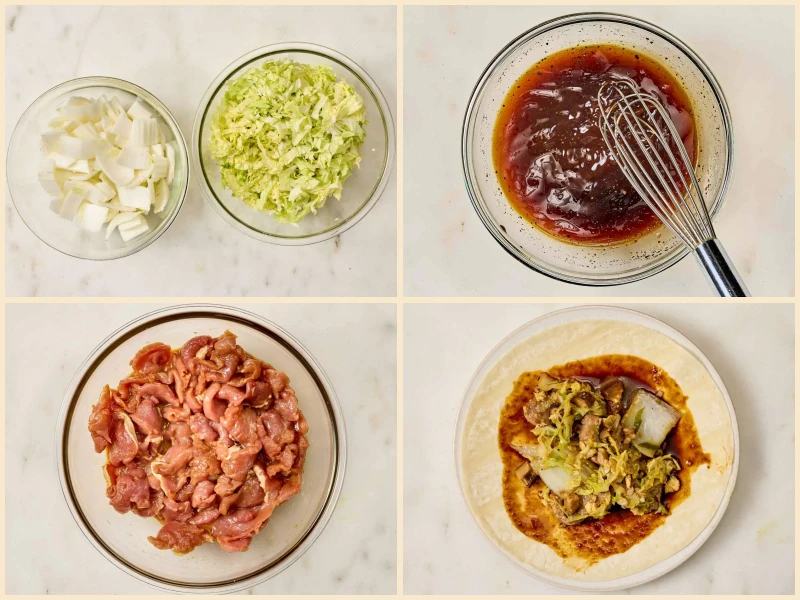

Author: Lindsay
Recipe Source: Allrecipes
Preparation Time: 15 minutes | Cooking Time: 15 minutes
Servings: 8 servings
Origin and History
Moo Shu Pork, or Mu Shu Pork, is a classic dish in Chinese cuisine, particularly popular in the northern regions of China. The dish dates back to the Qing Dynasty (1644-1912), where it was enjoyed as a delicacy among the nobility. The name "moo shu" comes from the Chinese word "m" (), meaning "wood," which refers to the wood ear mushrooms often used in the dish, symbolizing the use of simple, natural ingredients. While Moo Shu Pork has become a popular dish in Chinese-American cuisine, its historical roots lie deeply in the culinary traditions of northern China, with the original dish often featuring ingredients such as pork, eggs, vegetables, and a savory hoisin sauce. In ancient times, the dish was prepared as a nutritious meal for farmers, providing the energy needed for long working hours.
Regional Variations
The regional variations of Moo Shu Pork are influenced by local ingredients and regional preferences. In northern China, Moo Shu Pork is traditionally made with thin slices of pork, wood ear mushrooms, and a delicate hoisin sauce. In contrast, Chinese-American versions often use substitutes such as shiitake mushrooms, napa cabbage, and sometimes even tofu or chicken instead of pork. The dish is typically served with thin, soft Chinese pancakes, which are used to wrap the flavorful stir-fry mixture. Some regions in China might include additional vegetables such as carrots, snow peas, or bamboo shoots, providing extra crunch and color.
Differences from Similar Dishes
While Moo Shu Pork shares similarities with other Chinese stir-fry dishes, it stands apart due to the use of Chinese pancakes as a vessel for the stir-fried filling. Dishes like "Kung Pao Pork" or "General Tso's Chicken" are also stir-fries but are served over rice rather than wrapped in pancakes. Additionally, Moo Shu Pork contains a distinct balance of flavors from hoisin sauce, ginger, and garlic, which sets it apart from other stir-fried dishes that might rely more heavily on soy sauce or sweet and sour sauces. The use of napa cabbage and wood ear mushrooms also contributes a unique texture and flavor profile.
Where Moo Shu Pork Is Served
Moo Shu Pork is a popular dish served in Chinese restaurants across the globe, particularly in Chinese-American and Cantonese restaurants. It is commonly served as a part of a larger banquet meal, often enjoyed during holidays or festive occasions. In its traditional form, Moo Shu Pork is served with a small side of Chinese pancakes that are spread with hoisin sauce before being wrapped around the pork and vegetables. The dish is also a favorite in Chinese home cooking, where families prepare it for special occasions or as an easy weeknight dinner. Due to its balance of flavors and textures, it remains a beloved dish in Chinese dining culture.
Interesting Facts About Moo Shu Pork
- The use of Chinese pancakes to wrap the filling is an iconic feature of Moo Shu Pork. These pancakes are often found in Chinese restaurants, but they can also be made at home with flour and water.
- Moo Shu Pork was traditionally a dish for the Chinese aristocracy but has evolved into a mainstream favorite in Chinese-American cuisine, often customized with various proteins such as chicken, beef, or even tofu for vegetarian versions.
- In some parts of China, Moo Shu Pork is prepared with a combination of pork and mushrooms, creating a hearty yet light dish that complements the richness of hoisin sauce.
- The dish is often associated with the 'home-style' cooking of northern China, where fresh and seasonal ingredients are highly valued. As such, the dish's popularity has spread far beyond its place of origin.
You can listen to this recipe in AI audio format. Simply click the play button below to listen to the content in a format that suits you best. It’s a great way to absorb information on the go!
FAQ about Moo Shu Pork Recipe
Comments
Lisa Gonzalez
04/28/2025 10:15:27 PM
I absolutely adore mu shu and this dish really satisfied my cravings. So delicious!
Kelly Lee
09/13/2024 07:09:58 PM
Absolutely adored this recipe! The hoisin sauce truly elevated the dish. Enjoyed the process of preparing it. I can't fathom how anyone would find this meal lacking in flavor.
Victoria White
04/27/2023 09:20:06 AM
I really enjoyed this recipe! I opted to use rice spring roll wrappers along with plum sauce. Both the wrappers and plum sauce can be easily purchased at any Asian market, online on Amazon, or other platforms. As someone who follows a gluten-free diet, I often prepare my own Asian-inspired dishes to enjoy a variety of flavors, and this recipe definitely hit the spot!



